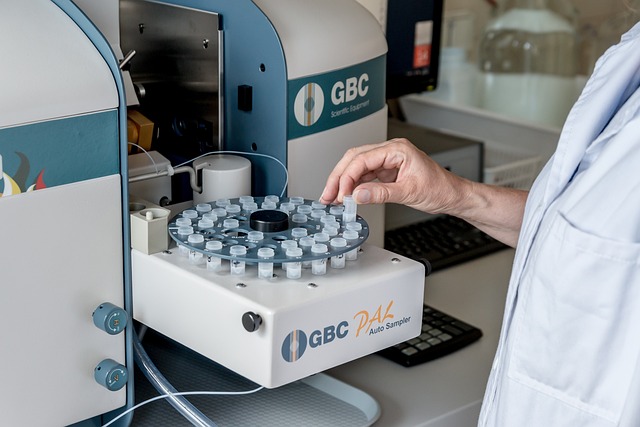Asbestos testing for older homes in San Antonio involves a multi-step process starting with visual inspection and using advanced techniques like TEM and XRF to identify chrysotile asbestos, emphasizing public health safety by accurately detecting hazardous materials for safe containment and removal during renovation.
In many older homes, asbestos remains a hidden danger. If you’re considering renovation or simply want peace of mind, understanding how to conduct asbestos testing is crucial. This guide explores effective methods for identifying asbestos, with a focus on chrysotile detection through advanced lab techniques. We also provide specific advice tailored for homeowners in San Antonio, empowering you to navigate this potential health risk effectively.
- Asbestos Testing Methods for Older Homes
- Detecting Chrysotile: Lab Techniques
- San Antonio: Guidance for Homeowners
Asbestos Testing Methods for Older Homes

When it comes to asbestos testing in older homes, especially in San Antonio, several methods are employed by certified labs to ensure accurate detection. The first step typically involves a visual inspection where professionals look for any visible signs of asbestos-containing materials (ACMs). This includes checking for old insulation, flooring, roofing, and even pipe insulation that might be containing chrysotile, one of the most common forms of asbestos.
For areas that cannot be easily inspected visually or if initial tests suggest the presence of asbestos, labs use more advanced techniques such as sample collection and analysis using Transmission Electron Microscopy (TEM) or X-ray Fluorescence (XRF). These methods allow for precise identification of the type of asbestos present, including chrysotile. Asbestos testing for older homes in San Antonio is crucial due to the potential health risks associated with exposure to ACMs, making prompt and accurate detection vital.
Detecting Chrysotile: Lab Techniques

Detecting chrysotile, a common form of asbestos found in many older homes in San Antonio and across the country, requires specialized techniques within laboratory settings. Asbestos testing for these structures is crucial for public health and safety due to the hazardous nature of this mineral when disturbed. Labs use a combination of methods to identify chrysotile fibers, including microscopic analysis and advanced chemical assays.
Under a microscope, technicians examine samples from suspect materials, such as insulation or flooring, to look for the characteristic needle-like shape and dark banding of chrysotile asbestos. More sensitive techniques, like X-ray diffraction (XRD) and transmission electron microscopy (TEM), offer even more precise identification by analyzing the unique crystalline structure of the fibers. These advanced lab methods are essential in accurately detecting chrysotile during renovation or remodeling projects to mitigate potential health risks associated with asbestos exposure.
San Antonio: Guidance for Homeowners

Many homeowners in San Antonio, with older homes built before the 1980s, may be unaware that their properties could contain asbestos. Asbestos was commonly used in construction materials due to its fire-resistant and insulative properties. However, the mineral has been linked to severe health issues, including lung cancer and mesothelioma. Therefore, it’s crucial for San Antonio residents to consider asbestos testing for older homes as part of their home maintenance routine.
If you own an older home in San Antonio, a comprehensive inspection is recommended. Professional asbestos detection labs can analyze samples from your home’s insulation, flooring, and other materials to determine the presence of chrysotile (a type of asbestos). Early detection is key; proper containment and removal methods can significantly reduce health risks associated with asbestos exposure.
In conclusion, proper asbestos testing is crucial for older homes in San Antonio to ensure safe and healthy living environments. By employing advanced lab techniques, such as detecting chrysotile fibers, homeowners can take informed actions to mitigate any potential risks. With the right guidance, like what’s available from local resources, residents can confidently navigate the process of identifying and managing asbestos, leading to a safer, more peaceful home life.
